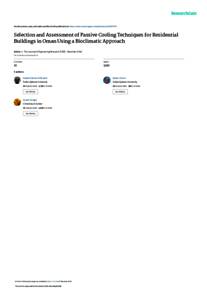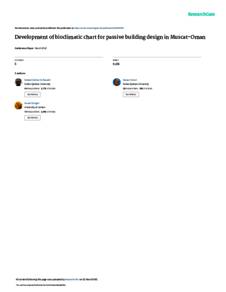وثيقة
Selection and assessment of passive cooling techniques for residential buildings in Oman using a bioclimatic approach.
المعرف
DOI: 10.24200/tjer.vol10iss2pp52-68
المساهمون
Zurigat, Y. H., مؤلف
Al-Rawahi, N., مؤلف
الناشر
Sultan Qaboos University.
ميلادي
2013
اللغة
الأنجليزية
الملخص الإنجليزي
Passive cooling is an ancient technique used in air reconditioning and ventilation. Despite its historical use, its relevance in building design has never ceased. To be sure, with the increasing interest in saving energy and preserving the environment, passive cooling stands out as a sustainable possibility. However, this is not always a viable option, and its practicality is determined mainly by the system's functionality, the type of activities involved in the space to be cooled, and the surrounding area's bioclimatic variables (i.e. temperature, humidity, and diurnal temperature differences). In areas under consideration for passive cooling systems, bioclimatic charts are helpful. Comprehensive charts, in which yearlong hourly meteorological data are projected on a psychrometric chart, help to determine the fits required by a particular location. In this paper, psychrometric charts were developed for eight locations in Oman, and a systematic procedure on the selection and viability of using passive cooling techniques is provided through meteorological data. Givoni's passive cooling zones are used and the applicability of each technique is quantified. The eight study locations are widely scattered around and Oman, and possess great geographical diversity. The presented results can help delineate the applicability of each passive cooling technique for residential buildings at each of the study locations and their proximities.
المجموعة
ISSN
1726-6009
URL المصدر
قالب العنصر
مقالات الدوريات


